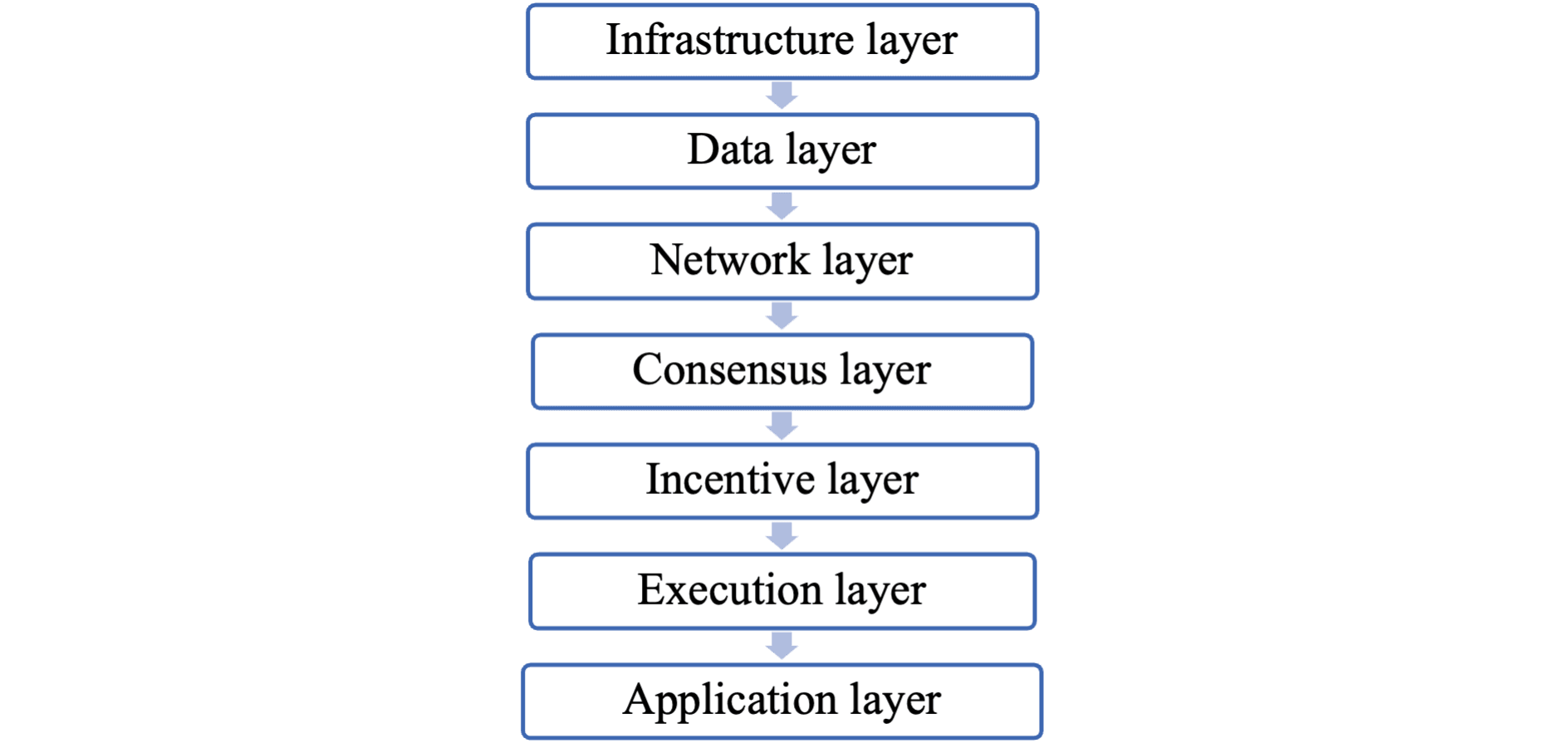Blockchain Architecture
Blockchain architecture is like a layered stack of technologies that work together to provide decentralization, immutability, and trustless transactions. Each layer has a specific role, from the physical infrastructure that runs nodes to the applications users interact with. Let’s explore each layer in detail with real-world examples.

1. Infrastructure Layer
The infrastructure layer forms the foundation of any blockchain network. It consists of the physical hardware, operating systems, and the different types of nodes that participate in the network. Full nodes maintain a complete copy of the blockchain, archival nodes preserve the entire history, and lightweight clients rely on others for verification. Storage technologies like SSDs and specialized databases handle the ever-growing state, while synchronization protocols ensure nodes keep accurate time. This layer is also where security hardening, observability, and resource optimization take place.
Examples: Bitcoin (full nodes and Electrum light wallets), Ethereum (Geth, Nethermind), Hyperledger Fabric.
2. Data Layer
The data layer defines how blockchain information is structured, stored, and linked together. Transactions are grouped into blocks, each secured by a cryptographic hash of the previous block, creating an immutable chain. Depending on the blockchain model, this data can be managed as a UTXO (unspent transaction output) set or as account balances. Advanced structures like Merkle trees, Patricia tries, and Verkle trees enable efficient verification and scalability. It also manages pruning, snapshots, and data availability techniques.
Examples: Bitcoin (UTXO & Merkle trees), Ethereum (account-based & Patricia tries), Solana (Proof of History ordering).
3. Network (P2P) Layer
The network layer manages how nodes communicate. Using peer-to-peer protocols, it ensures that transactions and blocks are quickly propagated across the system. Gossip-based communication spreads information redundantly, while mempools hold pending transactions. Peer discovery, encryption, and anti-spam features protect against attacks. Efficient networking is essential for low-latency confirmations.
Examples: Bitcoin (gossip protocol), Ethereum (devp2p), Polkadot (libp2p).
4. Consensus Layer
The consensus layer ensures that nodes agree on the same version of the blockchain. Mechanisms vary: PoW uses computation, PoS uses token staking, and BFT protocols use voting. It governs block proposals, validation, fork-choice rules, and finality. Penalties like slashing ensure honest participation.
Examples: Bitcoin (PoW), Ethereum 2.0 (PoS), Hyperledger Fabric (PBFT), Solana (PoS + Proof of History).
5. Incentive Layer
The incentive layer ties economics to network security. It defines token issuance, block rewards, and transaction fees. Miners/validators are rewarded for maintaining the system, while dishonest actors are penalized. In DeFi, incentives extend to MEV extraction and inclusion auctions.
Examples: Bitcoin (block rewards + fees), Ethereum (staking rewards + EIP-1559 fee burning), Cosmos/Polkadot (validator rewards with slashing risks).
6. Execution Layer
The execution layer runs smart contracts and decentralized apps (DApps). It defines virtual machines, gas metering, token standards, and oracles. Innovations like account abstraction and ZK execution environments improve usability and security.
Examples: Ethereum (EVM + Solidity), Solana (Sealevel runtime), Hyperledger Fabric (Go/Java/Node.js chaincode).
7. Application & Interface Layer
This is the top layer that users interact with. It includes wallets, dApps, APIs, and dashboards. It manages authentication, transaction signing, identity, and compliance. User experience is crucial for mainstream adoption, with innovations like embedded wallets and decentralized IDs driving progress.
Examples: Bitcoin (Ledger, Electrum wallets), Ethereum (Metamask, Trust Wallet), Hyperledger Fabric (enterprise dashboards).
Cross-Cutting Concerns
Security (audits, bug bounties), privacy (zero-knowledge proofs), scalability (rollups, sharding), interoperability (bridges, standards), and governance affect all layers. Off-chain solutions like IPFS, rollups, and data availability layers extend blockchain capabilities.
Examples: Zcash (privacy via ZKPs), Polygon/Arbitrum (L2 scaling), Cosmos/Polkadot (interoperability).
Together, these layers form a complete blockchain architecture. Each layer has its own technical challenges and trade-offs, but combined they create a decentralized, secure, and programmable system driving adoption across industries.
Test Your Knowledge
Practice what you've learned with these quizzes related to What is Blockchain?.
Continue Learning
Explore more topics in What is Blockchain? or browse other tutorials.